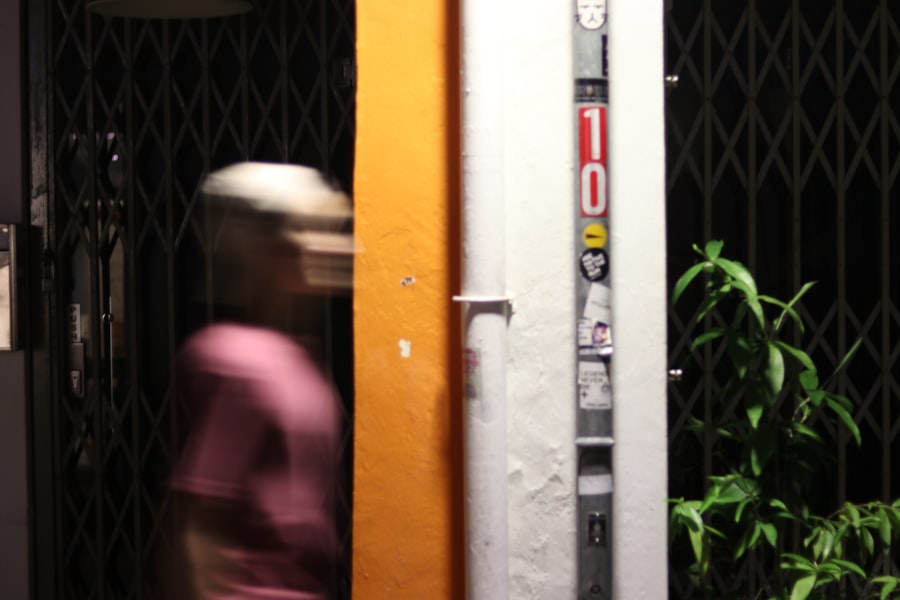The capture of Saddam Hussein, the former president of Iraq, marked a pivotal moment in the history of the Iraq War and the broader geopolitical landscape of the Middle East. The video documenting his capture, released to the public, provided a stark visual representation of the end of an era characterized by tyranny and oppression. This footage not only showcased the moment when U.S.
forces apprehended one of the most notorious dictators of the 20th century but also served as a symbol of hope for many Iraqis who had suffered under his regime. The video encapsulated a significant turning point, igniting discussions about justice, accountability, and the future of Iraq. The footage itself was both shocking and revealing.
It depicted a disheveled Hussein, captured in a small underground hideout near Tikrit, where he had been living in hiding for months. The stark contrast between his previous image as a powerful leader and his appearance at the time of capture was striking. This video became a crucial piece of evidence in the narrative surrounding the U.S.-led invasion of Iraq, illustrating the fall of a dictator who had once wielded immense power and instilled fear across the nation.
As the world watched, the implications of this event began to unfold, setting the stage for a complex series of events that would follow.
Key Takeaways
- The Saddam Hussein capture video was a pivotal moment in the Iraq War, marking the end of a brutal dictator’s reign.
- The hunt for Saddam Hussein involved extensive intelligence operations and cooperation between U.S. and Iraqi forces.
- The capture of Saddam Hussein was a significant victory for the U.S. and its allies in the Iraq War.
- The aftermath of Saddam Hussein’s capture led to a period of instability and insurgency in Iraq.
- The public reaction to the Saddam Hussein capture video was mixed, with some celebrating his downfall and others expressing concern about the future of Iraq.
The Hunt for Saddam Hussein
The hunt for Saddam Hussein was an extensive and multifaceted operation that spanned several months following the U.S.-led invasion of Iraq in March 2003. After the initial military campaign that led to the fall of Baghdad, U.S. forces quickly realized that capturing Hussein was not merely a matter of military strategy but also a psychological operation aimed at dismantling his regime’s remnants.
Intelligence reports indicated that Hussein was likely hiding in rural areas, relying on loyalists and sympathizers to evade capture. This prompted a relentless search that involved ground troops, aerial surveillance, and intelligence gathering. As the months passed, the search for Hussein became increasingly complex.
The former president’s ability to blend into the local population and utilize a network of supporters made him a difficult target. U.S. forces employed various tactics, including leaflets offering rewards for information leading to his capture and extensive raids on suspected hideouts.
The hunt was not without its challenges; it faced criticism regarding its effectiveness and raised questions about the overall strategy in Iraq. Nevertheless, the determination to locate Hussein remained unwavering, as his capture was seen as essential to stabilizing the country and legitimizing the U.S. presence.
The Capture of Saddam Hussein

On December 13, 2003, after months of searching, U.S.
The operation was executed with precision; soldiers from the 4th Infantry Division surrounded the area and conducted a thorough search.
The moment was surreal; the once-mighty leader was now reduced to a fugitive, captured in a manner that would forever alter his legacy. The capture itself was relatively uneventful, with Hussein reportedly surrendering without resistance.
The video footage released shortly thereafter showcased his disheveled appearance and demeanor, which starkly contrasted with his previous public persona as a defiant leader. This moment not only marked the end of his reign but also symbolized a significant victory for U.S. forces and their allies in Iraq.
The implications of his capture were profound; it represented a turning point in the war and raised hopes for a new beginning in Iraq, free from tyranny.
The Aftermath of Saddam Hussein’s Capture
| Metrics | Data |
|---|---|
| Number of casualties | Unknown |
| Impact on Iraqi government | Significant destabilization |
| International response | Mixed reactions |
| Effect on insurgency | Temporary decrease in attacks |
In the aftermath of Saddam Hussein’s capture, Iraq found itself at a crossroads. The immediate reaction among U.S. officials and military leaders was one of triumph; they believed that capturing Hussein would help stabilize the country and diminish insurgent activity.
However, this optimism was soon tempered by the reality on the ground. The power vacuum left by Hussein’s removal led to increased sectarian violence and insurgency, complicating efforts to establish a stable government. Hussein’s capture also sparked debates about justice and accountability.
Many Iraqis viewed his apprehension as an opportunity for retribution against years of oppression and brutality. However, others expressed concerns about potential reprisals against those who had supported his regime. As tensions escalated within Iraq, it became clear that Hussein’s capture did not automatically translate into peace or stability; rather, it opened up new challenges that would require careful navigation by both Iraqi leaders and international forces.
Public Reaction to the Saddam Hussein Capture Video
The release of the video documenting Saddam Hussein’s capture elicited a wide range of reactions from both Iraqis and people around the world. For many Iraqis, watching their former dictator being apprehended was a moment of catharsis; it symbolized liberation from years of fear and oppression. Celebrations erupted in various parts of Iraq as citizens expressed their relief and hope for a brighter future without Hussein’s iron grip on power.
Conversely, reactions outside Iraq were more mixed. While some viewed the capture as a necessary step toward justice and accountability, others raised concerns about the implications for U.S. foreign policy in the region.
Critics argued that the video served as propaganda for the U.S.-led invasion, overshadowing the complexities and challenges that lay ahead in rebuilding Iraq. The footage became emblematic of broader debates about interventionism and sovereignty, highlighting differing perspectives on how best to address issues of tyranny and governance.
Analysis of Saddam Hussein’s Appearance in the Video

Saddam Hussein’s appearance in the capture video provided significant insight into his psychological state at the time of apprehension. Gone was the confident leader who had once delivered fiery speeches to rally his supporters; instead, viewers saw a man who appeared disheveled and defeated. His unkempt beard and gaunt face reflected not only physical deterioration but also an emotional unraveling that came with being hunted for months.
The video also revealed Hussein’s demeanor during his capture—he exhibited a mix of defiance and resignation. While he initially attempted to maintain an air of authority by asserting his identity as a former president, it was evident that he understood his situation had drastically changed. This juxtaposition between his past power and present vulnerability resonated deeply with viewers, serving as a poignant reminder of how quickly fortunes can shift in politics.
International Response to the Capture of Saddam Hussein
The international response to Saddam Hussein’s capture was varied and complex, reflecting differing geopolitical interests and perspectives on U.S. involvement in Iraq. Many Western nations welcomed the news as a significant step toward restoring stability in Iraq and promoting democracy in the region.
Leaders hailed it as an opportunity to hold Hussein accountable for his crimes against humanity and to support efforts aimed at rebuilding Iraq. However, skepticism remained among some nations regarding U.S. motives in Iraq.
Critics argued that while capturing Hussein was important, it did not address underlying issues such as sectarian divisions or insurgency that plagued the country post-invasion. Additionally, concerns were raised about potential human rights violations during his detention and trial process. This divergence in perspectives highlighted ongoing tensions regarding interventionist policies and their long-term implications for regional stability.
Impact of the Saddam Hussein Capture Video on the Iraq War
The impact of Saddam Hussein’s capture video on the Iraq War was profound and multifaceted. Initially perceived as a turning point that could lead to greater stability, it soon became clear that capturing Hussein did not equate to an end to violence or unrest in Iraq. Instead, insurgent activity intensified following his apprehension, as various factions sought to fill the power vacuum left by his removal.
Moreover, the video served as both a rallying point for those opposed to U.S. presence in Iraq and a source of propaganda for insurgent groups seeking to galvanize support against foreign forces. The imagery of Hussein’s capture became emblematic of broader struggles within Iraq—between those advocating for democracy and those clinging to remnants of authoritarianism.
As such, while it marked an important moment in history, it also underscored the complexities inherent in post-war reconstruction efforts.
Saddam Hussein’s Trial and Execution
Following his capture, Saddam Hussein faced trial for crimes against humanity—a process that drew international attention and scrutiny. His trial began in October 2005 and lasted until November 2006 when he was ultimately sentenced to death for his role in orchestrating mass killings during his regime. The proceedings were marked by controversy; critics argued that they were politically motivated and lacked due process.
Hussein’s execution on December 30, 2006, further polarized opinions both within Iraq and globally. For many Iraqis who had suffered under his rule, it represented justice served; however, others viewed it as an act that could exacerbate sectarian tensions within an already fractured society. The trial and execution process highlighted ongoing debates about accountability versus reconciliation in post-conflict societies—a theme that continues to resonate in discussions about justice today.
Legacy of Saddam Hussein’s Capture
The legacy of Saddam Hussein’s capture is complex and multifaceted, reflecting both triumphs and challenges faced by Iraq post-invasion. On one hand, capturing one of history’s most notorious dictators symbolized hope for many who had endured years of oppression; it represented an opportunity for justice and accountability on an international stage. On the other hand, it underscored deeper issues within Iraqi society—sectarian divisions, insurgency, and governance challenges—that persisted long after his removal from power.
Hussein’s capture also left an indelible mark on U.S.-Iraq relations and broader international perceptions of interventionism. While some viewed it as a necessary step toward promoting democracy in the region, others criticized it as emblematic of failed foreign policy strategies that prioritized military action over diplomatic solutions. As such, his legacy continues to shape discussions about governance, human rights, and international relations today.
The End of a Dictator
In conclusion, Saddam Hussein’s capture marked not only the end of an era defined by tyranny but also set into motion a series of events that would shape Iraq’s future for years to come. The video documenting his apprehension served as both a symbol of hope for many Iraqis seeking liberation from oppression and a reminder of the complexities inherent in post-conflict reconstruction efforts. While capturing Hussein represented a significant victory for U.S.-led forces, it also highlighted ongoing challenges related to governance, sectarianism, and justice.
As history reflects on this pivotal moment, it becomes clear that while dictators may fall, their legacies often linger long after their removal from power. The aftermath of Hussein’s capture continues to resonate within discussions about accountability, reconciliation, and international intervention—issues that remain relevant in today’s geopolitical landscape as nations grapple with similar challenges around the world.
In the aftermath of Saddam Hussein’s capture, the world was captivated by the video footage that documented the event, providing a rare glimpse into the fall of a once-dominant leader. For those interested in exploring more about significant historical events and their impact, an article on Hey Did You Know This offers insightful perspectives and lesser-known facts that complement the narrative of such pivotal moments in history. This resource delves into various intriguing topics, providing a broader context to understand the complexities surrounding major global events.
WATCH NOW! How the US Hunted and Captured Saddam Hussein: The Untold Story of Operation Red Dawn
FAQs
What is the Saddam Hussein capture video?
The Saddam Hussein capture video is a recording of the capture of former Iraqi dictator Saddam Hussein by American forces on December 13, 2003.
Where was the Saddam Hussein capture video filmed?
The video was filmed in a rural area near the town of ad-Dawr, which is located near Tikrit, Saddam Hussein’s hometown.
Who captured Saddam Hussein?
Saddam Hussein was captured by a joint operation of the United States Army’s 4th Infantry Division and the United States Special Forces.
What is shown in the Saddam Hussein capture video?
The video shows Saddam Hussein being pulled out of a small underground hiding place, disoriented and disheveled, by American soldiers. It also shows him being examined by a medical team and being taken into custody.
Is the Saddam Hussein capture video publicly available?
Yes, the Saddam Hussein capture video has been widely circulated and is publicly available on the internet and in various media outlets.
